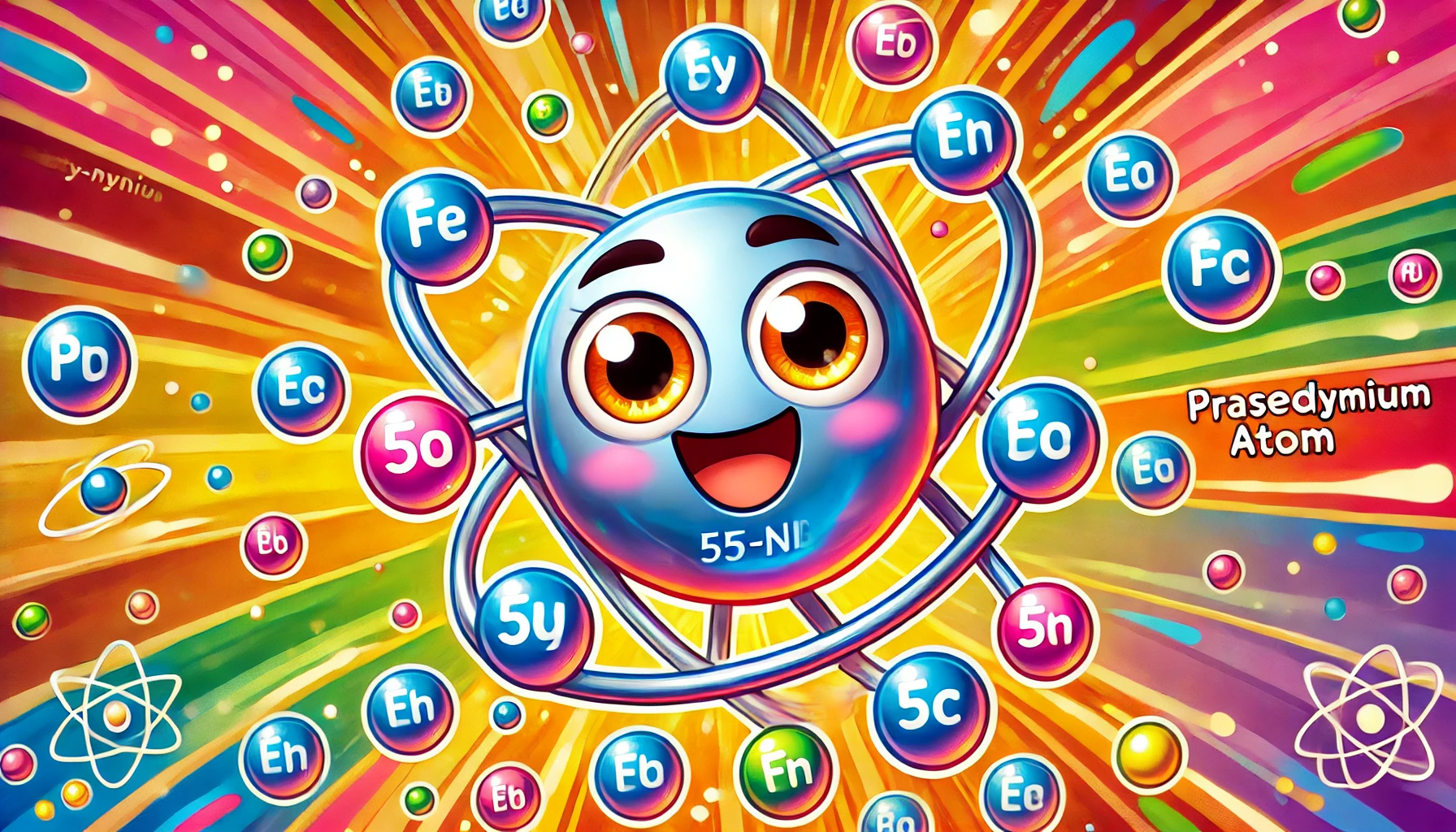Understanding Praseodymium: Properties, Uses, Health Risks, and Fascinating Facts
Understanding Praseodymium: Properties, Uses, Health Risks, and Fascinating Facts
Table of Contents
- Introduction to Praseodymium
- Properties of Praseodymium
- Uses of Praseodymium
- Health Risks of Praseodymium Exposure
- Interesting Facts about Praseodymium
- Environmental Impact of Praseodymium
- Conclusion
- References
Understanding Praseodymium: Properties, Uses, Health Risks, and Fascinating Facts
Introduction to Praseodymium Praseodymium is a chemical element with the symbol Pr and atomic number 59. It is a rare earth metal that is soft, silvery, and highly reactive. Praseodymium has a variety of industrial applications due to its unique properties, including its magnetic, electrical, and optical characteristics. This article explores the properties, uses, health risks, and interesting facts associated with praseodymium, providing a comprehensive understanding of this valuable element.
Properties of Praseodymium Praseodymium is characterized by several distinct physical and chemical properties.
Physical Properties
- Appearance: Praseodymium is a soft, silvery metal.
- Density: The density of praseodymium is 6.77 g/cm³.
- Melting Point: Praseodymium has a melting point of 931°C (1,708°F).
- Boiling Point: The boiling point of praseodymium is 3,512°C (6,354°F).
Chemical Properties
- Reactivity: Praseodymium is highly reactive, especially when exposed to air, forming a green oxide layer. It reacts with water to form praseodymium hydroxide and hydrogen gas.
- Compounds: Praseodymium forms various compounds, such as praseodymium oxide (Pr₂O₃), praseodymium chloride (PrCl₃), and praseodymium nitrate (Pr(NO₃)₃).
Uses of Praseodymium Praseodymium has numerous applications across different industries due to its unique properties.
Magnets
- Neodymium Magnets: Praseodymium is used as an alloying agent in the production of neodymium magnets (NdFeB magnets), which are among the strongest permanent magnets and are used in various electronic devices, including hard drives, headphones, and motors.
Glass and Optics
- Colored Glass: Praseodymium is used to create yellow and green glass for safety goggles, welder’s glasses, and certain types of decorative glass. It can also be used to create didymium glass, which filters out specific wavelengths of light.
- Optical Fibers: Praseodymium-doped optical fibers are used in telecommunications to amplify signals in fiber-optic cables.
Metal Alloys
- Aerospace Alloys: Praseodymium is used in alloys with magnesium to create high-strength metals for use in aircraft engines and other aerospace applications.
Catalysts
- Chemical Catalysts: Praseodymium is used in various catalytic applications, including automotive catalytic converters and in the refining of petroleum.
Other Applications
- Ceramics and Enamels: Praseodymium is used to produce pigments for ceramics and enamels, providing a range of colors from yellow to green.
- Lighting: Praseodymium is used in the production of certain types of lighting, such as studio lighting and projectors, due to its ability to filter light.
Health Risks of Praseodymium Exposure While praseodymium has beneficial uses, exposure to praseodymium compounds can pose health risks.
Inhalation and Ingestion
- Respiratory Issues: Inhalation of praseodymium dust or fumes can cause respiratory irritation, coughing, and shortness of breath.
- Gastrointestinal Issues: Ingestion of praseodymium compounds can cause gastrointestinal distress, including nausea, vomiting, and abdominal pain.
Skin and Eye Contact
- Skin Irritation: Direct contact with praseodymium compounds can cause skin irritation and dermatitis.
- Eye Irritation: Exposure to praseodymium dust or solutions can cause eye irritation and potential damage.
Chronic Exposure
- Organ Effects: Prolonged exposure to high levels of praseodymium compounds may affect the liver, kidneys, and other organs.
Interesting Facts about Praseodymium Praseodymium has several intriguing aspects that make it an interesting element.
Discovery
- Discovered in 1885: Praseodymium was discovered by Austrian chemist Carl Auer von Welsbach in 1885. He separated it from a mixture of rare earth elements, naming it after the Greek words “prasios didymos,” meaning “green twin,” due to its green salts and similarity to neodymium.
Unique Properties
- Magnetic Properties: Praseodymium contributes to the strong magnetic properties of neodymium magnets, making them essential for modern electronic devices.
- Coloration: Praseodymium can produce vibrant colors in glass and ceramics, ranging from yellow to green, depending on its oxidation state and the materials it is combined with.
Isotopes
- Stable Isotope: Praseodymium has only one naturally occurring stable isotope, praseodymium-141.
- Radioactive Isotopes: Several radioactive isotopes of praseodymium are known, including praseodymium-143, which is used in scientific research.
Environmental Impact of Praseodymium Praseodymium is not known to have significant environmental impacts, but its extraction and use should still be managed responsibly.
Natural Occurrence
- Abundance: Praseodymium is relatively abundant in the Earth’s crust and is typically found in minerals such as monazite and bastnäsite.
- Mining: Extraction of praseodymium must be done carefully to avoid environmental contamination and ensure sustainable practices.
Industrial Waste
- Waste Management: Proper disposal of praseodymium-containing industrial waste is crucial to prevent environmental contamination.
Conclusion Understanding praseodymium, its properties, uses, health risks, and interesting facts provides valuable insight into this rare earth metal. While praseodymium has several important applications, particularly in magnets, glass, and alloys, appropriate safety measures should be taken when handling praseodymium compounds. Its applications in optics, energy storage, and catalysis highlight its importance in modern technology and industry.

<ⓒ WizardMedics (wizardmedics.com)>






